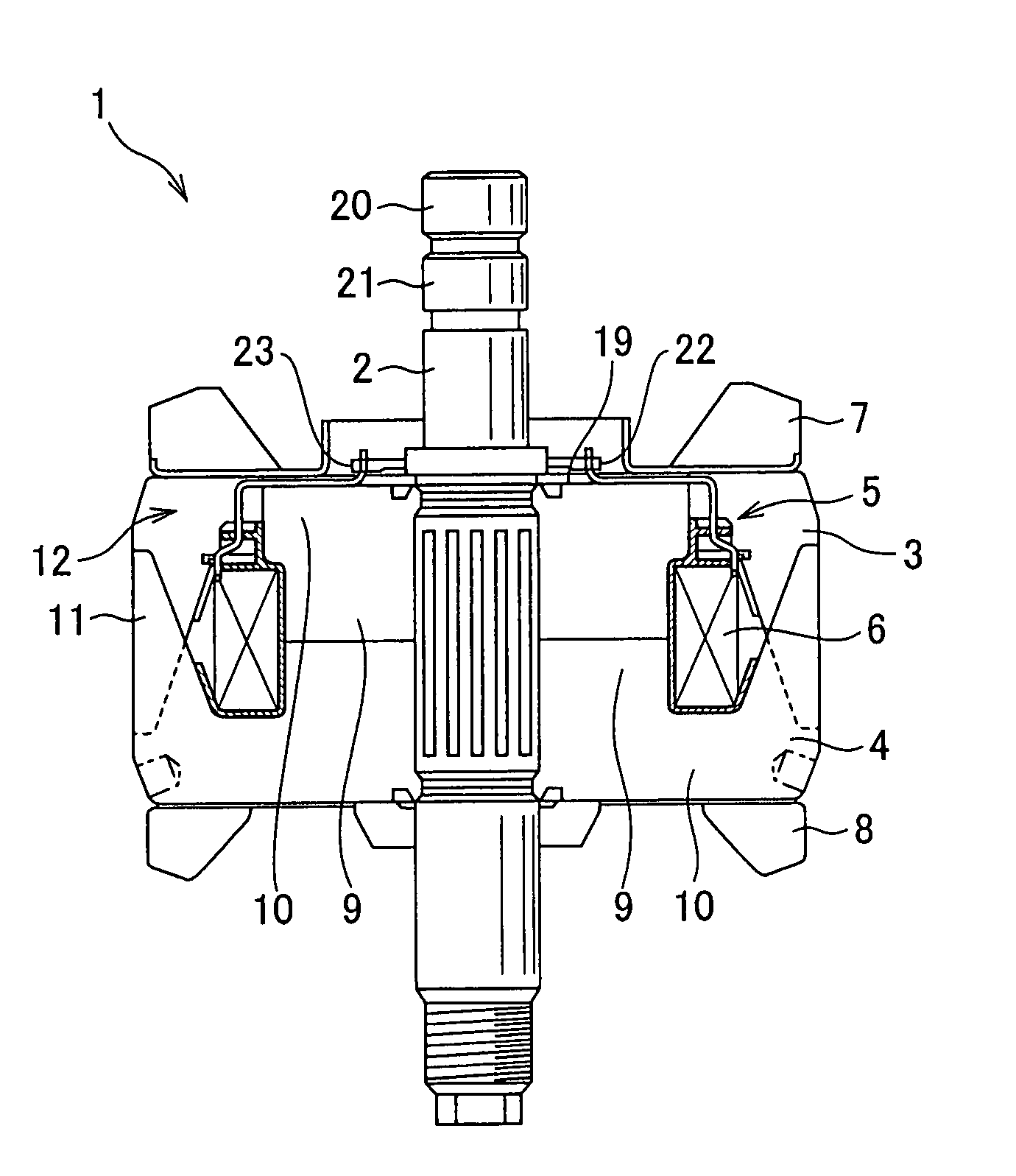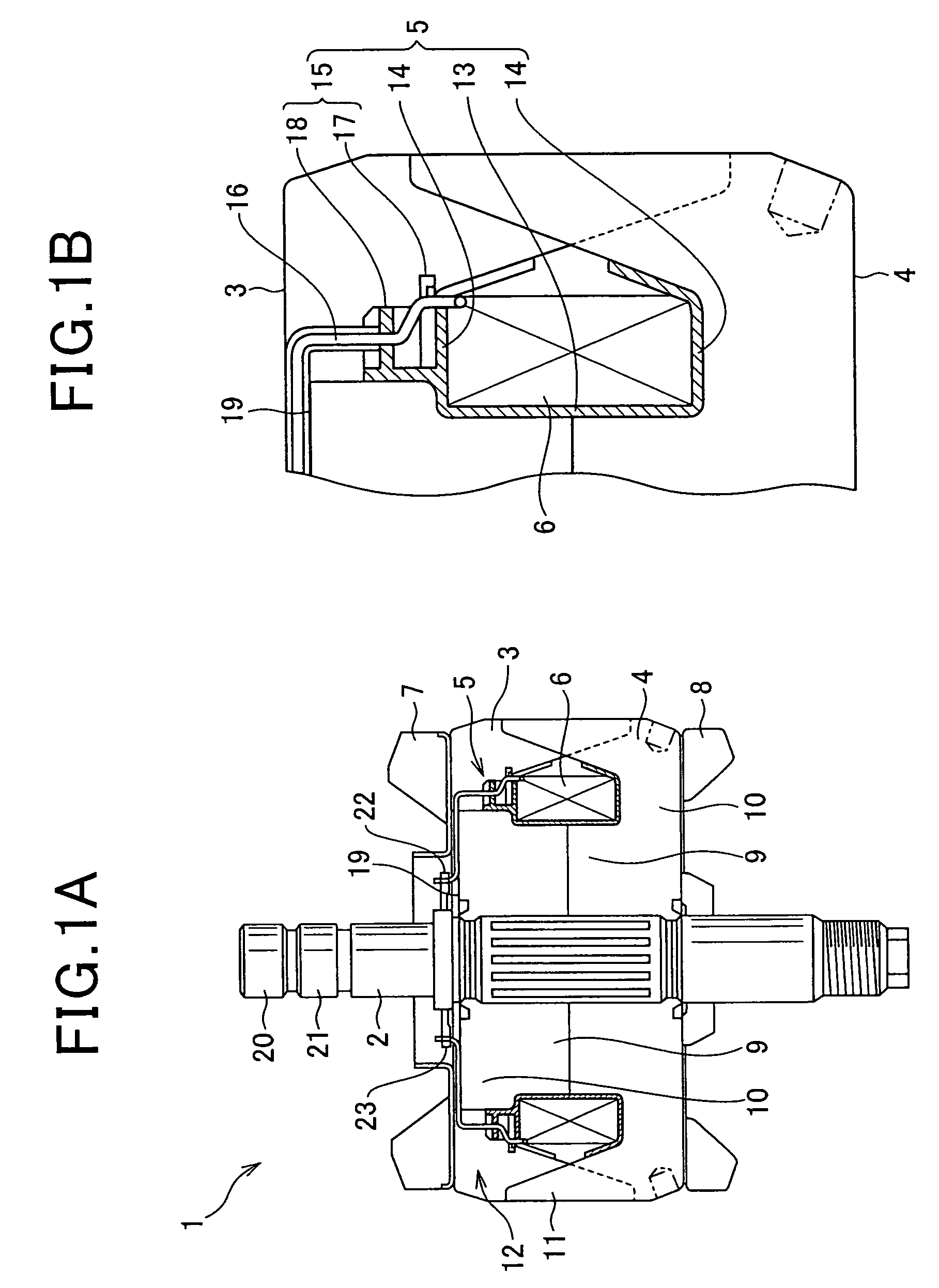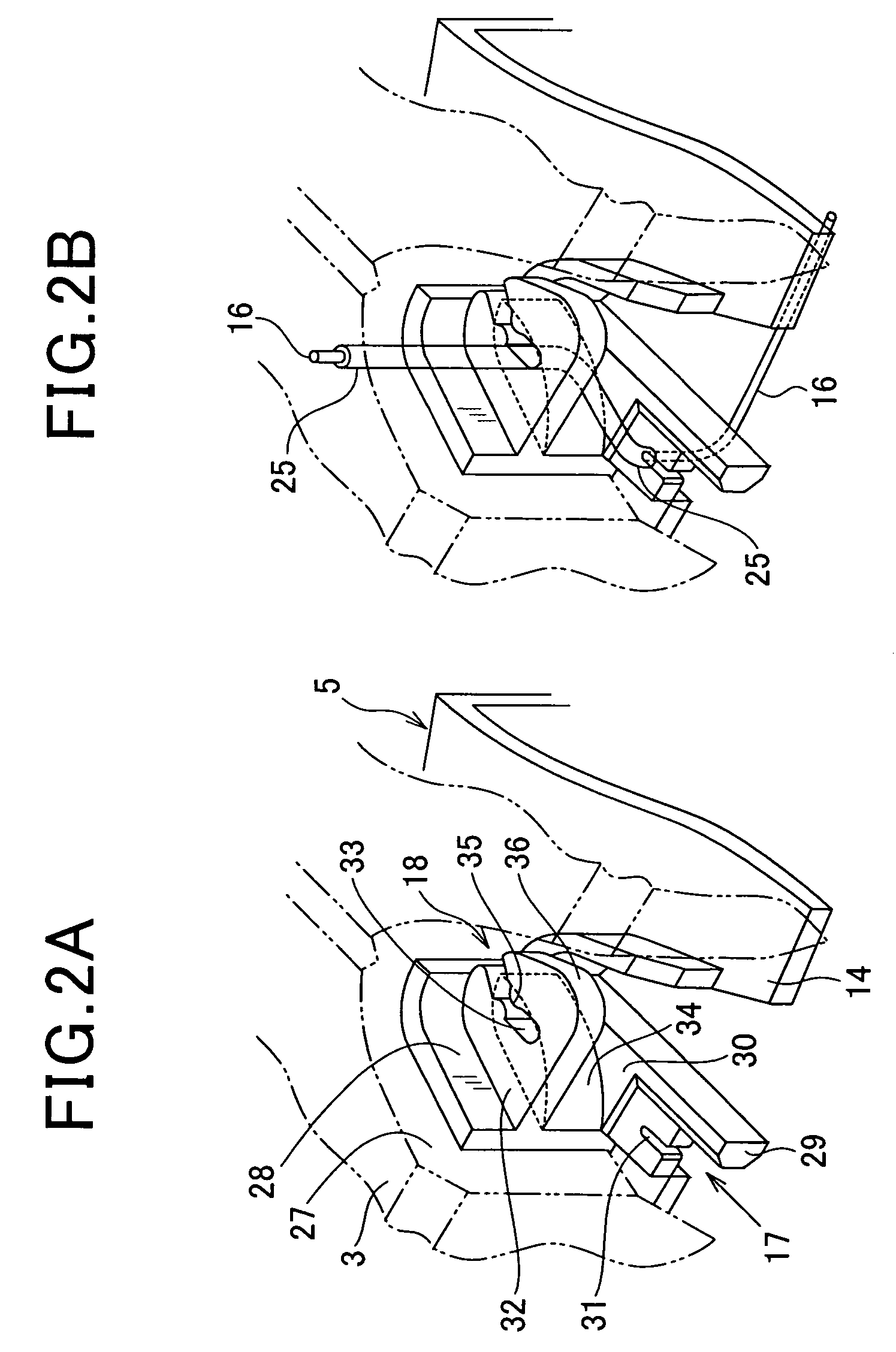Rotor for rotating electrical machine and method of manufacturing same
a technology of rotating electrical machines and rotating rotors, which is applied in the direction of rotating parts of magnetic circuits, magnetic circuit shapes/forms/construction, magnetic bodies, etc., can solve the problem of difficult passage of deformed insulating tubes through the neck
- Summary
- Abstract
- Description
- Claims
- Application Information
AI Technical Summary
Benefits of technology
Problems solved by technology
Method used
Image
Examples
first embodiment
[0097]FIG. 1A shows the overall structure of a rotor 1 according to the first embodiment of the invention.
[0098]The rotor 1 is designed to be used in an automotive alternator to create a rotating magnetic field. More specifically, the rotor 1 is designed to be rotatably supported by a frame (not shown) of the alternator and to be driven by an internal combustion engine of a motor vehicle.
[0099]As shown in FIG. 1A, the rotor 1 includes a shaft 2, a pair of Lundell-type pole cores 3 and 4 (i.e., rotor cores) press-fit on the shaft 2, an insulating bobbin 5 fit on the pole cores 3 and 4, a field coil 6 wound around the insulating bobbin 5, and cooling fans 7 and 8 fixed respectively to axial end faces of the pole cores 3 and 4.
[0100]The pole cores 3 and 4 have the same shape and size. Each of the pole cores has a cylindrical boss portion 9, a disc portion 10, and a plurality of claw portions 11. The boss portion 9 is coaxially press-fit on the shaft 2. The disc portion 10 extends radia...
second embodiment
[0140]This embodiment illustrates hook mechanisms for hooking the leads 16 of the field coil 6 which are different from the hook mechanisms according to the first embodiment.
[0141]In addition, in the present embodiment, the hook mechanisms for hooking the winding start and winding end leads 16 of the field coil 6 are also identical to each other. Therefore, for the sake of simplicity, only the winding end lead 16 and the hook mechanism therefore will be described hereinafter.
[0142]As shown in FIGS. 5A, 5B, and 6, in the present embodiment, the flange 14 of the insulating bobbin 5 is formed with a V-shaped wall portion 28, a first restricting portion 51, a second restricting portion 52, and fan-shaped portions 30, 32, and 39.
[0143]The wall portion 28 is fit to the surface 27 of the V-shaped groove 12 formed between the claw portions 11 of the pole core 3 and protrudes axially outward from the flange 14 by a predetermined distance.
[0144]The first restricting portion 51 protrudes from ...
third embodiment
[0177]This embodiment illustrates hook mechanisms for hooking the leads 16 of the field coil 6 which are modified from the hook mechanisms according to the second embodiment.
[0178]In addition, in the present embodiment, the hook mechanisms for hooking the winding start and winding end leads 16 of the field coil 6 are also identical to each other. Therefore, for the sake of simplicity, only the winding end lead 16 and the hook mechanism therefore will be described hereinafter.
[0179]As shown in FIGS. 8A, 8B, and 9, in the present embodiment, the flange 14 of the insulating bobbin 5 is formed with a V-shaped wall portion 28, a first restricting portion 51, a second restricting portion 52, fan-shaped portions 30 and 39, and protrusions 61 and 62.
[0180]The wall portion 28 is fit to the surface 27 of the V-shaped groove 12 formed between the claw portions 11 of the pole core 3 and protrudes axially outward from the flange 14 by a predetermined distance.
[0181]The first restricting portion ...
PUM
| Property | Measurement | Unit |
|---|---|---|
| width | aaaaa | aaaaa |
| diameter | aaaaa | aaaaa |
| thickness | aaaaa | aaaaa |
Abstract
Description
Claims
Application Information
 Login to View More
Login to View More - R&D
- Intellectual Property
- Life Sciences
- Materials
- Tech Scout
- Unparalleled Data Quality
- Higher Quality Content
- 60% Fewer Hallucinations
Browse by: Latest US Patents, China's latest patents, Technical Efficacy Thesaurus, Application Domain, Technology Topic, Popular Technical Reports.
© 2025 PatSnap. All rights reserved.Legal|Privacy policy|Modern Slavery Act Transparency Statement|Sitemap|About US| Contact US: help@patsnap.com



